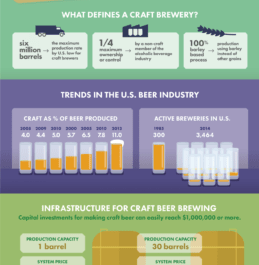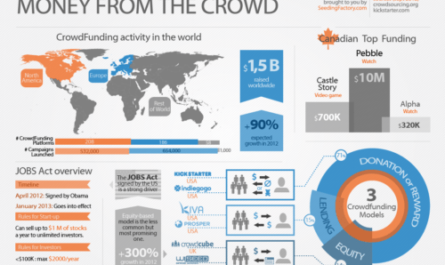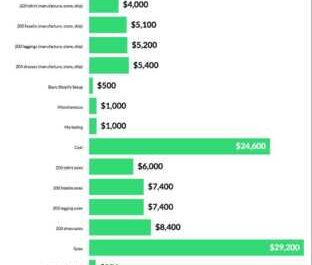Want to know what it takes to become an anesthesiologist? here is a complete guide and the conditions to become an anesthesiologist. …
Terminology varies from country to country, while in the United States their anesthesiologists are referred to as a physician who has an accredited residency program in anesthesiologist after graduating from medical school and in anesthesiologist for nurses who have received specialized training in the use of anesthesia under the supervision of a physician.
The UK calls for anesthesiologists who may be assisted by nurses and anesthesiology technicians. Anesthesiologists or anesthesiologists provide medical care to patients in an acute situation.
What is an anesthesiologist?
An anesthetist is a doctor who specializes in the administration of anesthetics before, during or after surgery or any other medical procedure. Anesthesiologists are responsible for keeping patients stable and pain free during surgery. They are doctors trained in anesthesia and perioperative medicine.
They provide preoperative assessments, consult with the surgical team, create an individualized plan for each patient, manage the patient’s airways, support the maintenance of intraoperative life and ensure pain control.
What are the responsibilities of an anesthesiologist and his job description?
- The use of anesthetics during medical procedures using local, spinal, caudal or intravenous methods.
- Monitor patients before, during, and after administration of anesthesia to check for and control for side effects or complications.
- Provide and maintain life support and airways, and help patients prepare for emergency surgery.
- Record or record the type and amount of anesthesia used and the patient’s condition during medical procedures.
- Examine the patient. obtain a medical history and use diagnostic tests to determine risk during surgery, obstetrics and other medical procedures.
- Correctly position patients on the operating table for surgical access and maximize patient comfort.
- Decide whether patients should be transferred to another ward, room, or sent home after stabilization and recovery.
- Coordinate administration of anesthetics during surgery with surgeons.
- Talk with other health care providers to determine the type of anesthetic to treat an unconscious or pain-sensitive patient.
- Supervise and coordinate nurses and technicians as well as other health professionals.
- Ordering x-rays, laboratory tests and other diagnostic procedures for the correct diagnosis of diseases.
- Educate students and other staff in anesthesia administration techniques and techniques, complications and symptoms that may arise, and emergency procedures that will counteract reactions.
- Maintenance of the surgical complex, which includes an operating room, toilets, waiting rooms, anesthesia and sterilization equipment.
- Educate patients, individuals and groups on health preservation and prevention from disease.
- To conduct medical research that will control and treat disease, research new drugs and test new medical methods.
Instruments and equipment used by the anesthesiologist
- body plethysmography machines
- arterial catheters
- AED automatic external defibrillators
- heart rate monitors and accessories.
- ECG machines for electrocardiography
- Stethoscopes for precordial and pretracheal operations
- Tracheostomy devices
- Anesthesia gas monitors
- Pulse oximeters
- Spirometer
Software tools used:
- EMR software for medical records
- Calendar and planning software
- Healthpac Computer Systems H2000 Anesthesia Billing Software
- Database user interface and query software.
- Web browser
- Messaging software
How to Become an Anesthesiologist Complete Guide
Facts, Figures and Labor Market Statistics for Anesthesiologists
- In the USA
- In 2014, anesthesiologists earned an average of $ 90 per hour and the average annual salary was $ 246,320.
- In 2012, 34,000 anesthesiologists were employed. with a projected vacancy of 16,700 between 2012 and 2022; that’s an average of 22%. 87% of anesthesiologists worked in the health and social services sector and 10% of anesthesiologists were employed.
- Anesthesiologists must apply for government licenses. Some states only require a medical licensing exam (MLE), while others require additional exams.
- Anesthesiologists work under sterile conditions and remain standing for longer periods of time, especially during surgery.
- All physicians, regardless of discipline, must spend at least 50 hours when applying for license renewal. continuing education at the specified time.
United Kingdom
- In 2013, according to a census carried out by the Royal College of Anesthesiologists, there were 12,000 consultant anesthesiologists in the UK. 66% of hospitalized patients received assistance from an anesthesiologist.
- 6 million anesthetics are administered each year.
- Most consultant anesthetists are 70% men, 28% women. …
- Deaths of anesthesiologists are rare in the UK, with around 1 in 185,000 general anesthetics.
- There are approximately 5,400 nursing anesthetists. Nurse anesthesiologists assist anesthesiologists.
- Anesthesiologists administer anesthetics to patients in radiology, radiation therapy and dental surgery.
- Anesthesiologists work long hours, including weekends and nights. In accordance with European legislation, working hours must not exceed 48 hours per week.
- The training of doctors is paid extra if they work more than 40 hours per week or outside working hours from 7 to 19 hours during the week.
- Progress at all levels will include learning and continuing professional development (CPD).
In Australia
- In 2012, there were 3,600 anesthesiologists employed with an expected increase in employment of 3,900 by 2021.
- Between 2011 and 2016, there was a -16.4% drop in the use of anesthetics, although employment is expected to increase sharply in 2021
- The top 3 regions in which anesthesiologists worked were Queensland (23.4%), Victoria (23.4%) and New South Wales (18.9%).
- The anesthesiologist worked an average of 44.3 hours. during the week.
- There were more full-time male anesthesiologists than women; the percentage was 65.9% for men and 18.2%.
- Anesthesiologists are physicians with a bachelor’s degree in medicine. and a bachelor’s degree in surgery (MB, ChB or MBBS) specializing in anesthesia.
In Canada
- There were 3,118 anesthesiologists employed as in 2013. 34% worked in university health centers and 30% worked in public hospitals.
- Anesthesiologists are physicians holding an MD (Medicinae Doctorem) or MDCM (Medicinae Doctororem and Chirurgiae Magistrum) degree specializing in the field of anesthesiology.
- In 2013, there were more male anesthesiologists than women.
- The average running time was 33.2 hours per week, most of which was on standby. up to 120 hours per month.
- In 2013, 101 foreign anesthesiologists were trained in Canada.
- 92% of anesthesiologists were certified by Kings College in 2013, the highest rate of any organ.
Is the demand for anesthesiologists decreasing or increasing?
Many people suffer from severe pain and require medication as they grow. Mothers looking to relieve pain during childbirth or have surgery will need anesthesiologists.
Anesthesiologists are always needed for patients who require surgery to treat various diseases. The demand for anesthesiologists will always increase.
The impact of the Internet and technology on the profession of anesthesiologist?
Positive
- Anesthesiologists can use the Internet to learn about medical trends without sacrificing patient time.
- Anesthesiologists can provide health care and disease prevention information to patients online.
- Doctors can connect with their colleagues and share vital information that will help them advance their careers.
Negative words
- The internet has not been kind to anesthesiologists who have accused them of negligence, especially since internet research reveals both right and wrong and can ruin the anesthesiologist’s name.
Career in the profession of anesthesia
- Microbiologists: they study microorganisms such as viruses, algae, bacteria and fungi, and certain types of parasites; trying to understand the life cycle of organisms.
- Medical scientists, excluding epidemiologists: they conduct research to understand human disease and improve human health.
- Pharmacist: A pharmacist is a person experienced in dispensing medication to a patient on prescription from a physician, dentist, physician and other health care professional.
- Medical assistants: They examine patients, diagnose and treat. They are supervised by doctors and surgeons and practice medicine as a team.
- Family and general practitioners: they diagnose and treat injuries that can usually occur. They also help prevent disease and refer patients to specialists for further treatment.
- Nurse Anesthesiologists: They assist with anesthesia, monitor the patient’s vital signs, and generally monitor the patient’s recovery after anesthesia.
Professional organizations that exist in the anesthesia profession
American Board of Anesthesiology (ABA): The ABA also certifies anesthesiologists who are Doctors of Medicine (MD) and Doctors of Osteopathy (DO). ABA is a member of the American Board of Medical Specialties.
United Kingdom
- Royal College of Anesthesiologists: This is a professional organization that provides quality patient care by ensuring that standards in the areas of anesthesia, critical care, and pain relief are met.
- Association of Anesthesiologists of Great Britain, Ireland: The purpose of this association is to promote and develop education, safety and research in the field of anesthesia, and to ensure that the standard for the well- being and professionalism of its members is respected.
In Australia
- Australian Society of Anesthesiologists (ASA): The ASA is a professional organization that promotes and upholds the status, best interests and independence of anesthesiologists in Australia.
- Medical Council of Australia: This is a licensing and registration body that requires anesthesiologists to be registered and licensed before they can practice.
In Canada
- Canadian Anesthesiologists’ Society (CBS): CBS contributes to improved patient care through education, advocacy, and research.
Benefits of becoming an anesthesiologist?
- Personal Responsibility: The anesthesiologist is responsible for stabilizing the patient and avoiding pain during medical procedures. In most cases, patients are usually unconscious during the procedures, and the anesthesiologist should ensure that patients are sufficiently sedated without attempting to compromise their heart and lungs. Anesthesiologists also take care of properly managing patients’ airways during surgery, as well as caring for patients with chronic pain, whether in hospitals or long-term care facilities.
- Stable Home Life: During the first few years of an anesthesiologist’s career, they would take turns calling or shitting. This allows anesthesiologists to lead a stable family life by creating a balanced lifestyle. In addition, anesthesiologists can decide on a work environment in which they feel more comfortable; therefore, while some prefer hospitals, others prefer an outpatient clinic, while others prefer to run their own pain management practice, where the hours can be predictable and regular.
- Career: Of all medical specialties, the years before becoming an anesthesiologist are relatively shorter. Interested anesthesiologists spend 3 years in residency in anesthesiology after completing an internship in medical specialties, while other specialties can range from 3 to 5 years, followed by an additional 1 to 4 years in specialized scholarships.
- Average compensation: Compared to other doctors, anesthesiologists earn very well. The lowest median income for anesthesiologists in 2012 was $ 316,500 per year, and the highest was $ 471,667. The earnings are comparable to those of general surgeons and cardiologists and are higher than those of obstetricians, neurologists, family physicians and other professionals.
- Helping people: even though most of their patients are unconscious and know next to nothing about them; Anesthesiologists have a dedicated role in ensuring that patients stay alive and that there are no airway issues or medications during the procedure. Anesthesiologists are satisfied when the procedure does not cause problems for the patient.
Factors that prevent people from becoming anesthesiologists
- Long training period: Future anesthesiologists must train longer before they can become one. In the United States it takes a total of 4 years, while in the United Kingdom anesthesiologists study longer than their American counterparts.
- The work is thankless: most patients who have surgeries tend to be asleep and therefore do not know or recognize the anesthesiologists who have done their job so well or helped with the procedures and therefore cannot thank them; they only recognize and thank their doctors.
- Sub – program . Most of the tasks performed by the anesthesiologist are mostly routine and often repetitive, as there are slight differences regarding the procedure.
- Malpractice: The anesthesiologist should always have liability insurance as he or she could be sued for malpractice due to circumstances that may arise before, during and after the procedure.
- Planning . Due to the work parameters, the anesthesiologist’s schedule may not provide a stable life. Those who work in hospitals or emergency care facilities should avoid calls. They may also have to work late, depending on the length of the operation and even work at night.
How much do anesthesiologists earn monthly / annually
The average annual income of anesthesiologists depends on their specialization, class, working hours, environment, and many other factors.
According to the Bureau of Labor Statistics in 2014, anesthesiologists earned an average of $ 90 per hour and the average salary is $ 246,320 per year.
- Britain
a trained anesthesiologist earns £ 28,976 per year. The consultant anesthesiologist earned an average of £ 73,403 and the senior consultant anesthesiologist earned an average of £ 173,000 per year.
In 2012, the starting salary for an anesthesiologist averaged $ 125,000 per year; the average annual salary was $ 165,000 and that of the senior anesthesiologist was $ 215,000.
In 2015, anesthesiologists in Canada earned an average of CAN $ 50.50 per hour and CAN $ 203,906 per year.
Training requirements to obtain anesthesiology
up to one can become an anesthesiologist after passing the prerequisites in high school, it takes quite a long time, especially because they undergo further training after a general medical stay.
- In the United States, it will take about 13 years or more.
- In the UK, it will take around 14-16 years.
- In Australia , it takes around 16 to 20 years.
- In Canada , it takes about 14 to 15 years.
An anesthesiologist is considered a doctor and must undergo the same formal training as a doctor. Education Requirements Before Becoming An Anesthesiologist After High School Graduation, Or Equivalent:
IN THE USA
- Baccalaureate . Most medical schools require applicants to pursue a bachelor’s degree, especially in pre-medical or science majors, which can take 4 years. The candidate must also prepare for medical college by taking and passing the medical college entrance examination (MCAT)
- Medical School: In medical school, students acquire knowledge in sciences and specialties during the first two years, then focus on clinical research and internships, which also take an additional 2 years.
- Residency: This is a medical internship where anesthesiologists complete 4 years of residency training, the first year of internship is surgical or medical and the following 3 years with anesthesiologists.
- Scholarship: This is a specialty in anesthesiology and physicians. will have to decide whether they want to specialize in neurology, cardiology, pediatrics and other similar specialties. It takes 1 year for each subspecialty, and anesthesiologists who want more subspecialties will need more time.
- License and Credentials: Before anesthesiologists can practice, a three-step U.S. Medical License Assessment (USMLE) is required. Steps 1 and 2 can be done in medical school, with the last step being done during residency.
- During residency, certificates are required for each specialty within the specialty.
- The last step before an anesthesiologist can become certified is an oral and written exam by the American Board of Anesthesiology (ABA). Council certificates may also be issued for sub-specialties.
IN GREAT BRITAIN
- Pre-medical or foundation year: This is for those who have no scientific qualification and usually lasts for 1 year.
- Degree of Medicine: . This is a bachelor’s degree that requires a period of 5 years and is recognized by the General Medical Council (GMC)
- Academic Year (F1): This is an annual core program for new medical graduates to develop the knowledge and skills acquired during their medical degree. Pre-registration is done by the General Medical Council (GMC), which then proceeds to full registration once F1 is over.
- Core Year (F2): This is another one-year course in which students acquire skills and abilities in teamwork, acute patient management and communication, this is the stage where the specialty is chosen.
- The student must also pass the MRCP exam (UK).
- Upon completion of studies, the student may be fully enrolled with the General Medical Council (GMC). ) and choose a profession specializing in anesthesiology.
- Certificate in Anesthesia Training (CCT): This is a 7-year training program for trainees who wish to follow the basic route of anesthesia. or 8 years for those following the Common Stem Acute Care Pathway (ACCS).
- Completion of the training leads to obtaining a CCT certificate, which allows you to participate in the GMC Specialist Register and apply for the position of consulting anesthesiologist.
IN AUSTRALIA
- University; All universities with a medical degree at the end of grade 12 may require an ATAR of 99 on the HSR (High School Rank) scale, a high score on the UMAT (entrance test for medical students and in science) or an interview. Some universities offer 5-6 year medical license degrees.
- Medical school completed, between 4 years for university graduates and 6 years for university students.
- The internship lasts 1 year and includes internships in the fields of medicine, emergency medicine and surgery.
- Residency can last a year or more and involve more rotations at the hospital. Some residents spend many years in residence before entering vocational training.
- Vocational training lasts 5 years or more. It takes 5 years before an Australian and New Zealand College of Anesthesiologists scholarship can be completed.
IN CANADA
- University Before taking the College of Medicine Entrance Examination (MCAT), you must complete a 3-4 year undergraduate program.
- Medical schools last 4 years, then the student takes the Medical Council of Canada Exam (MCEE) Part 1.
- Residency takes place upon successful completion of the MCEE and must take place at a university approved by the Royal College of Physicians and Surgeons of Canada. After the first year of residency, residents take the MCEE Part 2. Residency lasts 5 years, the first year follows basic clinical training.
- After the residency, the candidate takes a complete written and oral exam.
- After completing training, a graduate anesthesiologist can become a member of the Royal College of Physicians of Canada and use the title FRCPC.
Certificates required for recognition by an anesthesiologist
- United States -: American Board of Medical Specialties program grants certification in Anesthesiology (MOCA)
- UK-: Anesthesiologists can take a course on key clinical skills.
- Australia-: One is available for an MSc in Anesthesiology.
- Canada-: AFC diploma can be obtained.
How much does it cost to become an anesthesiologist?
- In the United States, MOCA starts at $ 2,100 every 10 years and $ 210 in annual participation fees.
- The key clinical skills UK cost £ 95
- In Australia, a master’s program costs $ 1,130
- In Canada, AFC costs $ 850
Can you become an anesthesiologist online?
No, no one can become an anem thesiologist by taking an online course. Anesthesiologists need practical experience that cannot be acquired alone. In addition, high school students rarely know which area of medicine they would like to specialize in before, during or after medical school.
Career opportunities for anesthesiologists
- Administrators specialized: the administrators specialized are those responsible for the effective operation of a specific service.
- Management Consultants: Organizations that help management consultants improve their performance.
- Career Coach: Career Coaching advises individuals on career changes. They also help physicians improve their skills and develop new sources of income for physicians.
- Financial planner: is the person who prepares the funds for the people. Anesthesiologists with this skill can use it to help other physicians plan their finances.
- Retail or Manufacturing: With calm and unobtrusive skill, anesthesiologists can become experts in business management, especially when difficult situations arise.
Skills and qualities required to become a successful anesthesiologist
- Communication skills: Before surgery, the anesthesiologist should ensure that he carefully studies the patient’s medical records. He should also ask the patient specific questions explaining their role in medical procedures in a clear and concise manner, disclose possible risks, and allay any distress the patient may display. When consulting with the patient, the anesthesiologist should be compassionate and help the patient feel as comfortable as possible. After the surgery, the anesthesiologist communicates with the patient about what happened during the surgery and answers any questions the patient may have.
- Agility: The anesthesiologist should have good motor skills that will allow him to successfully prescribe pain relief medications before, during and after surgery.
- Composition: Anesthesiologists must be able to work under pressure. They must also be able to remain calm in an emergency by acting quickly.
- Attention to detail: Anesthesiologists should be careful with the dosages they administer, as improper doses can lead to serious complications that can even lead to death.
- Problem Solving Ability: The anesthesiologist should be able to review the information and make a final decision, which should be communicated to other physician and nurse anesthetists during the operation.
- Quick Thinking: The anesthesiologist should be able to calculate the chemical factors that have entered the patient’s body.
- Physical endurance: Anesthesiologists must be able to perform physical tasks such as lifting various equipment. They must also be able to stand for long periods of time or bend over patients, especially during surgery.
Tips and Tricks to Advance Your Anesthesiologist Career
- Professional and Personal Skills: For anesthesiologists taking a professional and personal skills course, professional and personal skills are likely to make the doctor more visible, allowing him to move forward.
- Industry Awareness: This means anesthesiologists need to be aware of what’s going on in their associations or other genuine channels so that they can deliver standardized patient care.
- Networking: Networking means networking with other professionals in the same specialty. and on the ground. You can participate through seminars, lunches and corporate events organized by the appropriate professional body.
- Social Media Tools: The Internet is a great career promotion tool. anesthesiologist as it can be used to keep track of relevant industry figures and is also used to network. Social media tools such as LinkedIn, Facebook, Twitter, Instagram, and personal blogs can also be used by anesthesiologists to disseminate useful disease prevention information as well as to disseminate valuable information to other users.
- Education: Getting an education or earning a doctorate or MBA can help an anesthesiologist advance in their career. Additional qualifications allow doctors to occupy managerial or managerial positions in a hospital.









































